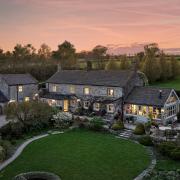Attempts are being made by a campaigning community to make more of a small market town in South Yorkshire Photographs by Elizabeth Savage
Getting there: Thorne is11 miles north east of Doncaster, with easy links to the M18 (Junction 6) and the M180 (Junction 1). Thorne North is on the Sheffield to Hull line. Train services from Sheffield and Doncaster to Scunthorpe call at Thorne South.
Where to park: There is parking in Bridge Street, Church Street and Queen Street.
What to do: Visit Peel Hill Motte, a local landmark which dates back to before 1100. Walk part of the Peatlands Way, a 50-mile footpath linking the communities of the Humberhead Peatlands, which includes the first permissive paths across the Thorne and Hatfield Moors, wildlife sites of national and European importance. Take a ride on Thorne Memorial Park Miniature Railway.
No wonder it’s been nicknamed ‘Little Holland’. The market town of Thorne, in the borough of Doncaster, South Yorkshire, has big skies, flat landscapes and a canal. How Dutch is that? If you go back in time, you’ll find another connection with the Netherlands.
The marshes around here were transformed into farmland by one Cornelius Vermuyden during the mid-17th century. And Vermuyden, as his name practically screams, was a Dutchman. Plus, there are windmills. Well, a wind farm to be precise, which is currently being built at nearby Tween Bridge.
You either like wind farms or you don’t, but either way there’s no missing this one. At the time of writing, 22 turbines are being heaved into position which should, say the operators, power 30,000 homes which is ironic because eco-energy is one thing you don’t associate with Thorne, which stands proud on the River Don and built its reputation on coal.
In the 1920s, with the Colliery open, the town was booming and times were good. Forty years later, however, when work in the colliery ceased, the prosperity went with it.
Since then, Thorne has become something of a commuter town.‘Thorne is a very accessible place,’ says Jeremy Sherlock, town clerk at Thorne-Moorends Town Council. ‘There’s a certain amount of local employment, but I think a fairly high percentage of people work outside the town.’
Doubly ironically, the transport links out of Thorne are so good they draw people in.
This is a place which has excellent connections to two motorways and two train stations. Those train stations certainly made an impact on international opera star Lesley Garrett, who was born in Thorne. As a toddler, she remembers sitting on her dad’s shoulders on Thorne North Bridge.
‘He suddenly said: “Look: can you see – it’s coming!”’ says Lesley. ‘And in the distance I could see this plume of smoke. It got closer and louder and then flew underneath us. I thought it was a dragon and I was terrified. I screamed and buried my head in dad’s hair. He said: “That was the Flying Scotsman!” That’s a really powerful memory for me.’
Craig Nicholls has been a resident of Thorne since 1982. ‘From my house, I can walk along the canal through the park and to the town centre,’ he says. ‘The town itself has a wide variety of shops, everything you need for day-to-day living, anyway, and a good range of pubs. What more do you need in life?’
What indeed? In fact, some years ago, when Craig was looking to move house, he drew up a list of what he wanted from a location and found that he was already living in it. In the end, he moved two doors along the street.
Craig is also chair of the Friends of Bunting’s Wood. This is 80 acres of former agricultural land which was purchased by Thorne-Moorends Town Council in 1993, in order to create a community woodland. ‘The councils were concerned about the lack of woodland in north Doncaster,’ he says.
‘They took the opportunity to buy land adjoining the canal, which was brave of them. It forms a sort of green corridor now. If you’re trying to create jobs and bring companies into an area, then beautifying an area is a good enticement.’
Craig got involved with the Friends of Bunting’s Wood because he wanted to put something back into the area and, at the time, was doing a degree in countryside management. The woodland, he says, is named after the late William Bunting, a local campaigner for public rights of way. As a local beauty spot, it is now enjoyed by all and used by various community groups.
Sadly, Thorne town centre hasn’t been quite so well-tended. Jen Barley is a founding member and leading light of the group Thorne Needs You which is campaigning to renovate the middle of Thorne, starting with Number 1 and 2 The Market Place. ‘These two buildings in the market place are pulling Thorne down,’ says Jen. They are in private hands; but Thorne Needs You wants them to be restored to public ownership and then refurbished which, it feels, would visually enhance the centre and, perhaps, entice businesses in. ‘Thorne people are desperate to get something done,’ says Jen.
‘Even the market isn’t what it once was. We feel that if these buildings were renovated it would look more appealing to market traders.’ Jen was born in Thorne and had a footwear store there; her great grandmother had a fish and chip shop in the town. Thorne is part of her, she says. It’s in her blood and she loves it. And she’s not the only one.
‘Thorne is very popular with the local community,’ says Jeremy Sherlock. ‘Clearly some work is needed to enhance the central area, but it has the potential to be an attractive small market town.’


























